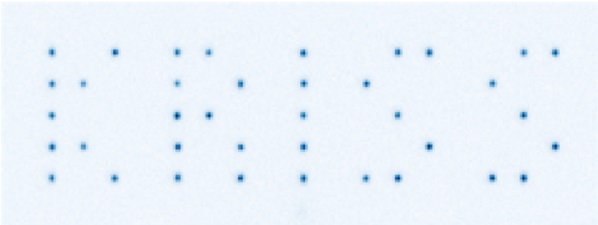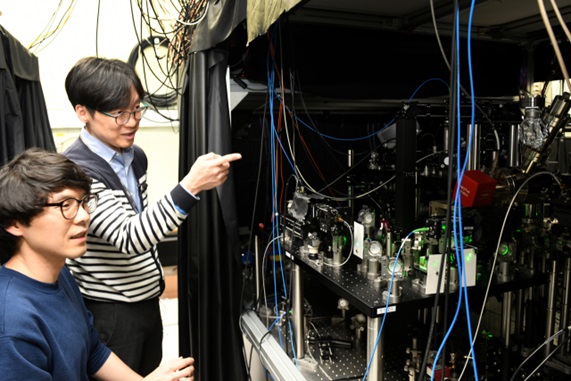On May 9, at the Quantum Technology Institute of the Korea Research Institute of Standards and Science (KRISS) in Yuseong-gu, Daejeon, lead researcher Jongchul Mun pointed to an image representing the institute’s English acronym, “KRISS.” While it appeared at first glance to be a crude pattern of 38 dots, he explained it was, in fact, the product of cutting-edge technology that precisely arranges individual atoms, each spaced just 0.1 nanometers apart—a scale smaller than a billionth of a meter.
This delicate arrangement embodies core technologies behind a new class of quantum computers known as neutral atom quantum computers—a field where global competition is intensifying, particularly among advanced nations like the United States.

In the KRISS neutral atom quantum computer lab, a small horizontal, vertical, and height of about 1 meter was operating with green light. It was so quiet that it was impossible to tell whether the device was operating without flickering light. The device carefully walked the blackout curtain at the request of “Don’t touch anything” and investigated it, a dense collection of various optical elements such as lenses, mirrors, and light shards that looked like a small magnifying glass was placed upright.
Wires hung densely from it, transmitting power and signals, so much so that the apparatus evoked images of ENIAC, the world’s first electronic computer from 80 years ago. Despite the cramped space, the device contains nearly 1,000 optical elements. These work to manipulate and direct laser beams into a small 20-centimeter box where neutral atoms, serving as quantum bits (qubits), are trapped and precisely arranged.
Unlike classical computers, which manipulate electricity, neutral atom quantum computers operate by controlling light. Optical components bend, reflect, and shape laser beams, altering their direction and phase. When lasers are focused on a single point, they can use electromagnetic forces to move individual atoms to exact locations—a process known as atomic control. By converging two laser beams at a single spot, researchers can simulate an “optical tweezer,” picking up atoms as if with a pair of chopsticks. The word “KRISS” displayed at the lab entrance was painstakingly crafted by using this method to position atoms one by one.
KRISS is focusing on this technology to compete globally in the race to develop neutral atom quantum computers, a rising alternative to superconducting quantum systems currently championed by tech giants like Google and IBM. Quantum computers use qubits that can represent both 0 and 1 simultaneously, allowing unprecedented processing power. Neutral atom systems offer an edge: the ability to maintain qubit stability for longer periods compared to superconducting qubits, thanks to the laser-based control of individual atoms.
Another key advantage is their cooling requirements. Unlike superconducting systems that rely on bulky, expensive refrigeration units, neutral atom quantum computers can more easily reach millikelvin (mK) temperatures—just above absolute zero—without massive hardware. These ultracold environments are critical for stable quantum operations. With this in mind, U.S.-based QuEra, France’s Pasqal, and Japan’s Institute for Molecular Science are all preparing commercial models for release within the year. The Korean government, through KRISS, plans to develop a domestic neutral atom quantum computer, following its upcoming launch of a homegrown superconducting model. As part of the ₩700 billion (approx. $510 million) “Quantum Flagship Project,” the country aims to build a 1,000-qubit quantum computer within five years.
In the same building, researchers are also advancing superconducting quantum computing. The lab hums with the loud whirl of helium pumps—required to keep the system at cryogenic temperatures using 20 liters of helium-3 gas, which costs about 10 million won ($7,400) per liter. The setup, resembling a massive metal drum, exudes a commanding presence.
The signature golden chandelier-like structure that symbolizes superconducting quantum computers was hidden inside a vacuum-sealed capsule. “It’s designed to block out air, light, and other environmental noise,” said senior researcher Hong Chang-ki. “We’ve layered five vacuum shields to achieve pressures as low as one-billionth of an atmosphere.” KRISS plans to soon commercialize its 20-qubit superconducting quantum computer and further enhance its cooling systems to reach 50 qubits by next year.


